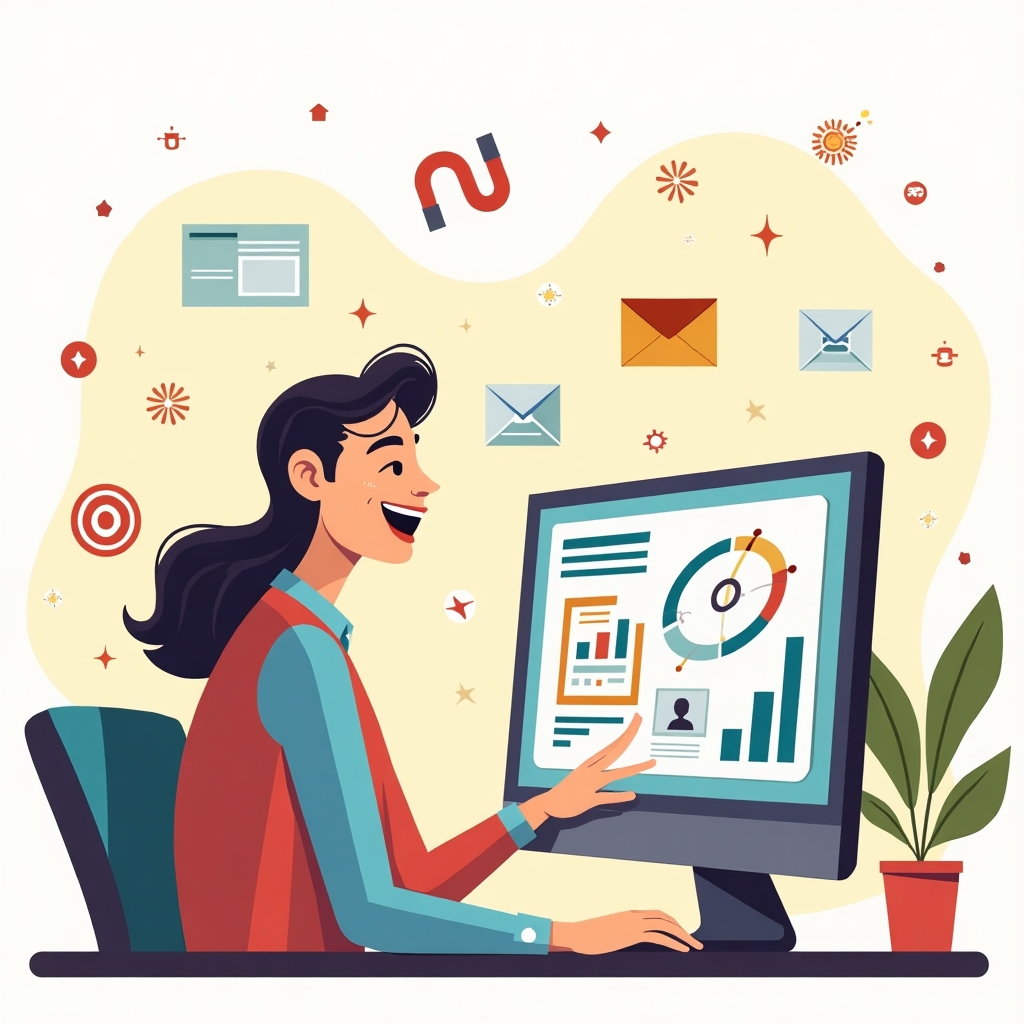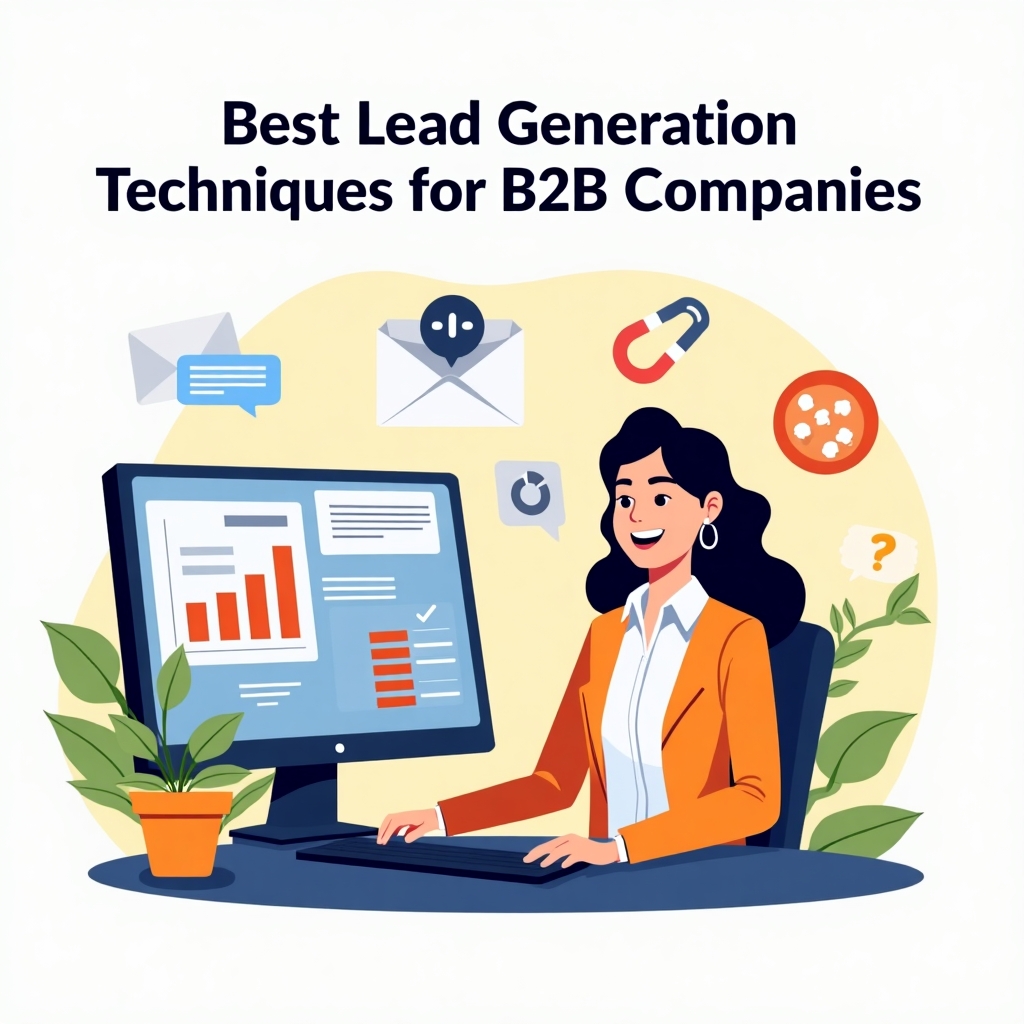Generating high-quality leads is the lifeblood of every B2B company. In an era where competition is fierce and customer attention is fragmented, businesses can no longer rely on outdated marketing tactics. Instead, they must adopt data-driven, customer-centric, and scalable methods to capture and convert potential clients effectively.
At The Digital Influencer, we’ve analyzed what truly works in the digital landscape. This blog explores the best lead generation techniques for B2B companies, designed to help marketing teams create consistent pipelines of qualified prospects and drive sustainable growth.
Understanding B2B Lead Generation in the Modern Era

What Is B2B Lead Generation?
B2B lead generation is the process of identifying and attracting potential business customers who are likely to purchase your product or service. Unlike B2C, where buying decisions can be emotional and immediate, B2B sales cycles are longer, research-driven, and involve multiple decision-makers.
The challenge lies in not just generating leads — but generating the right ones. High-quality leads ensure your sales team spends time on prospects that are genuinely interested and have the authority and budget to buy.
Why Traditional Lead Generation No Longer Works
Cold calls, generic emails, and broad advertising have lost their effectiveness. Buyers are now more informed, tech-savvy, and skeptical. According to recent studies, over 70% of B2B buyers conduct online research before engaging with a sales representative.
This shift demands a smarter, more targeted approach to outreach — one that builds trust through value-driven engagement.
Best Lead Generation Techniques for B2B Companies
Below are some of the most effective, ROI-driven strategies that modern B2B marketers use to attract, nurture, and convert leads.
1. Content Marketing: The Foundation of B2B Lead Generation
High-value content establishes authority and drives inbound leads organically. A strong content marketing strategy includes:
- Blog Posts and Guides: Create educational, SEO-optimized articles that answer your audience’s most common pain points.
- Whitepapers & Case Studies: Offer in-depth resources that highlight results and insights, proving your credibility.
- Video Content: Use explainer videos, customer success stories, and webinars to simplify complex solutions.
Pro Tip: Map your content to the buyer’s journey — awareness, consideration, and decision stages. This ensures you’re always providing the right message at the right time.
2. LinkedIn Marketing: Your B2B Powerhouse
LinkedIn is the #1 platform for B2B lead generation, with over 80% of B2B leads coming through the network.
How to Leverage LinkedIn Effectively:
- Optimize your company and personal profiles with clear CTAs and value propositions.
- Publish thought-leadership posts and industry insights regularly.
- Use LinkedIn Sales Navigator to target decision-makers based on roles, industries, and company size.
- Engage in relevant industry groups and discussions to increase visibility.
Paid campaigns on LinkedIn can also yield excellent results if targeted precisely — think Sponsored Content and InMail campaigns tailored for your ICP (Ideal Customer Profile).
3. SEO and SEM: Building Long-Term Visibility
Search Engine Optimization (SEO) remains a cornerstone of inbound lead generation. Ranking on the first page for industry-specific keywords can bring consistent, high-intent traffic to your website.
B2B SEO Checklist:
- Conduct keyword research around pain points and solutions your audience searches for.
- Optimize landing pages with clear messaging and calls to action.
- Build authority through backlinks, guest posts, and digital PR.
To accelerate results, combine SEO with Search Engine Marketing (SEM) — using Google Ads or Bing Ads to target leads searching for your solutions right now.
4. Account-Based Marketing (ABM): Target the Right Companies
ABM focuses on targeting specific high-value accounts instead of a broad audience. It aligns marketing and sales teams to deliver personalized campaigns for decision-makers within those accounts.
Steps to Implement ABM Successfully:
- Identify key accounts with the highest revenue potential.
- Research decision-makers and tailor messaging to their pain points.
- Use personalized email sequences, LinkedIn outreach, and retargeting ads.
- Measure engagement and optimize touchpoints continuously.
ABM helps reduce wasted effort and increases conversion rates by focusing only on the most promising prospects.
5. Marketing Automation: Streamline and Scale Your Efforts
Automation tools like HubSpot, Marketo, or ActiveCampaign can revolutionize your lead generation workflow. They help you:
- Nurture leads through personalized email sequences.
- Score leads based on engagement and readiness to buy.
- Deliver timely, automated follow-ups.
Automation doesn’t just save time — it ensures consistency and precision in every touchpoint.
6. Webinars and Virtual Events: Building Trust Through Education
Webinars allow you to demonstrate expertise and engage directly with your audience. B2B buyers value education before commitment, and webinars are perfect for that.
Best Practices for High-Converting Webinars:
- Choose topics that solve real business problems.
- Partner with industry experts to boost credibility.
- Offer replays and gated downloads for ongoing lead capture.
Promote your webinars through email campaigns, LinkedIn events, and remarketing ads.
7. Email Marketing: The Art of Nurturing Leads
Despite the rise of social media, email remains one of the highest-converting best lead generation techniques for B2B companies.
How to Make Email Work for B2B:
- Segment your audience based on behavior, role, and stage in the funnel.
- Use personalized subject lines and actionable CTAs.
- Provide valuable content — not just promotions.
Email automation paired with strong segmentation can significantly increase engagement and ROI.
8. Paid Advertising: Accelerate Your Lead Flow
Paid campaigns, when done strategically, can fuel your pipeline quickly.
Effective Paid Channels for B2B:
- LinkedIn Ads for professional targeting.
- Google Search Ads for high-intent leads.
- Retargeting Campaigns to re-engage past visitors.
Always track conversion metrics and A/B test creatives to improve ad performance.
9. Chatbots and Conversational Marketing
AI-driven chatbots can engage website visitors instantly, answering questions and capturing contact details. They help reduce friction and move leads faster through the funnel.
Platforms like Drift or Intercom make it easy to qualify visitors and route them to the right sales reps in real time.
10. Data Analytics and Performance Tracking
Data is the backbone of modern B2B lead generation. Tools like Google Analytics, HubSpot, or SEMrush can help you measure every step — from impressions to conversions.
Track key metrics such as:
- Lead source and cost per lead (CPL)
- Conversion rate per channel
- Lead-to-customer ratio
Use insights to refine campaigns, eliminate underperforming channels, and double down on what works.
Common Mistakes to Avoid in B2B Lead Generation
Even the best marketers can fall into traps that limit results. Avoid these pitfalls:
- Targeting too broad an audience without a defined ICP.
- Relying solely on one channel (like cold emails).
- Neglecting follow-ups or nurturing sequences.
- Failing to align marketing and sales goals.

